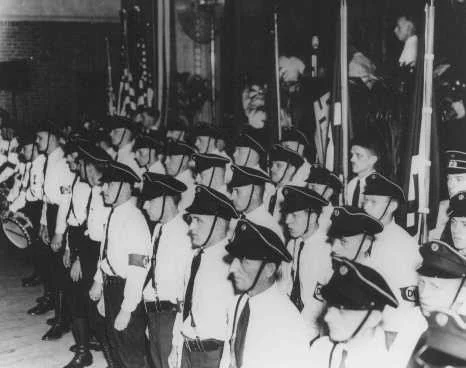Not Exactly a Fairytale
Dear Leading Ladies,
We tried. We really tried to take a break from the news during the holidays. We limited watching MSNBC, listening to NPR, reading the Globe and the New York Times. One of our phones even reported screen time down almost 30 percent.
But it was hard to ignore the disturbing news out of Ukraine and the Middle East, as well as the drama and melodrama heating up in the presidential campaigns. And then there are the heartbreaking stats about the rising rates of homelessness and food insecurity on our own shores.
The biggest interruption to our attempted break from the news, however, came from Rachel Maddow’s new book, Prequel.
Learning from the past
Not that we expected a romance novel or happy ending from the insightful author, podcaster, and political analyst. Yet, even after seeing her talk about the book on television, the facts she shares about the depth and breadth of pro-Nazi and antisemitic feelings in our country before and during World War II are chilling.
Here, again, is a piece of US history about which most, if not all, of us are unaware. And that is not an accident. It is by design. By the time the truth was uncovered — through the scrupulous investigations of a few reporters, a couple of attorneys, and a mail advertising pro, among others — the war was over and the higher-ups in government believed nothing would be gained by the public knowing the whole truth. The country needed to come together, it was thought, and should not be given any reason to be pulled apart. Luckily, because of Maddow’s book and the work of those she calls the “smart, brave, determined, resourceful, self-sacrificing Americans” who unearthed the truth about the Nazi penetration into the United States, “[F]or our turn in history — and for the next time this comes around, too — we have the advantage of knowing that which preceded us.”
That was the consoling part of the book — the idea that we can follow the warning of writer/philosopher George Santayana: “'Those who fail to learn from history are condemned to repeat it.” As we face white supremacist groups, a rise in antisemitism and hate crimes directed at Blacks, Asians, LGBTQ+, and other minority groups, we find it oddly reassuring that hate groups are not new in our country and that they have been brought to their knees before. Not eradicated, but contained. We just need to pay attention and do the work.
’30s and ’40s Fascist groups
So, what was the situation in the 1930s and 1940s in the US? Hitler was rising to power in Germany and honing his plans for at least European, if not world, domination. The Jews were a great first step, an easy enemy to rally his Aryan countrymen around. He looked to the US for a blueprint — seeking guidance from the way our country handled the Native Americans and the enslaved African Americans as well as the ideas promulgated by the leaders of the eugenics movement, many of whom were professors at our Ivy League universities.
As Hitler began annexing and conquering in Europe, he wanted to keep the US out of the war, since we would be a more formidable foe than his neighbors. And so began his propaganda assault on our country. After World War I, there was already a surge in isolationist feeling, so it was easy to build on that. There was also a strong anti-communist sentiment that morphed into pro-fascist feeling. And, Hitler claimed, antisemitism was stronger in the US than it was in pre-war Germany. Support for the German chancellor was ripe for the picking.
20,000 in Madison Square Garden
Organizations began to proliferate in the States. The German American Bund (20,000 people attended their rally in Madison Square Gardens in 1933 and they sponsored several Nazi youth camps) and The Christian Front were just two of them. Several US senators and representatives were supporters of different groups that promoted fascism and antisemitism. Famous people such as aviators Charles Lindbergh and Laura Ingalls and industrialist Henry Ford spoke out about the dangers and evils of Jews and the need to contain their further immigration to the US. Ford even underwrote the expense of printing and distributing 500,000 copies of the antisemitic screed, Protocols of the Elders. Moreover, there was a massive propaganda campaign, with pro-fascist literature dropped from planes and passed out all over the country. Funding for these PR efforts, as well as many of the groups, would eventually be traced back to Germany.
There’s no surprise ending here. The US did enter the war, not because of any newfound concern about the Jews, but only after Japan attacked us at Pearl Harbor in December 1941 and Germany declared war on our country. The Allies were victorious and our soldiers returned home to a country that offered healing for some but not all.
But that’s another story. In this moment, we need to look at what is going on with divisive hate groups and take seriously the possibility of other countries wielding influence from afar. We know now that it has happened before. And we have a presidential candidate who thinks Putin is a great guy.
Enough said.
Happy New Year! And thanks to Rachel Maddow for disturbing our break, but in a good way. In addition to the book, Maddow covers this piece of our history in a riveting podcast entitled Ultra.
Best,
Therese (she/her/hers)
Judy (she/her/hers)
Didi (she/her/hers)
Leading Ladies Executive Team

